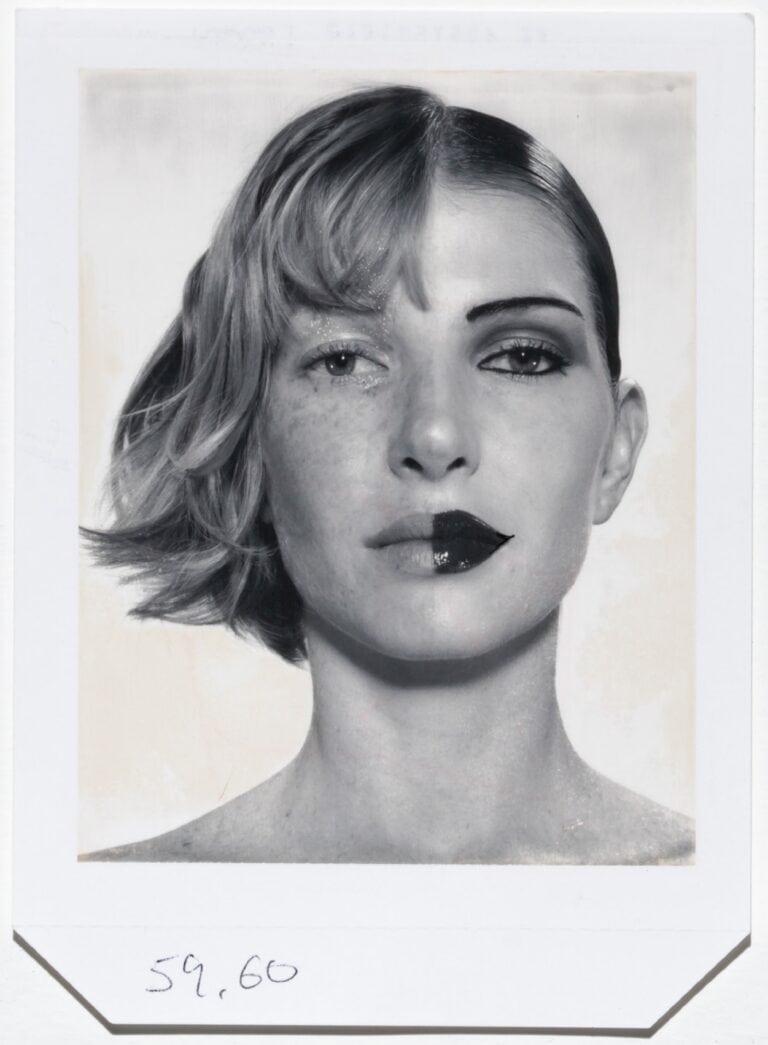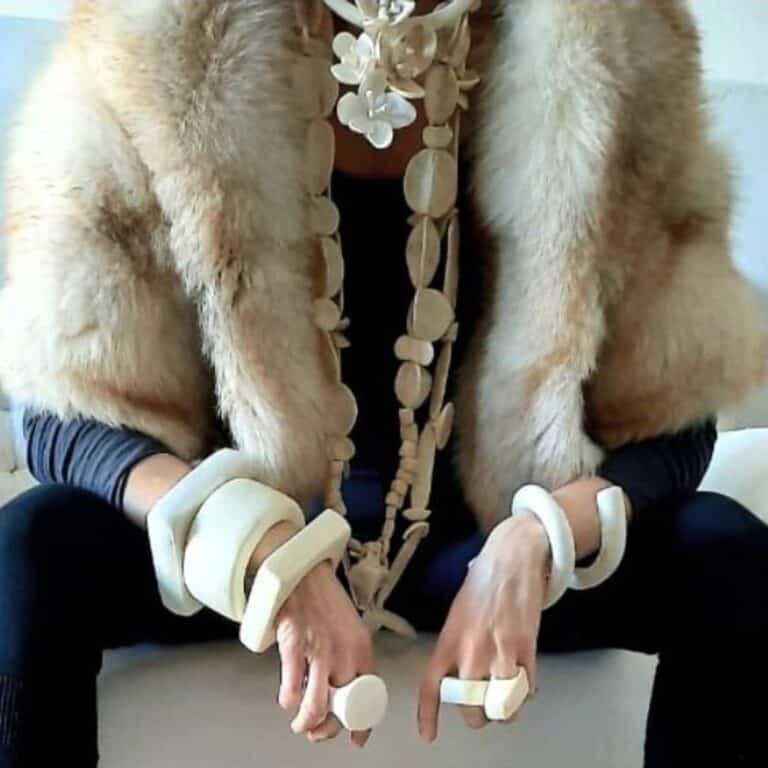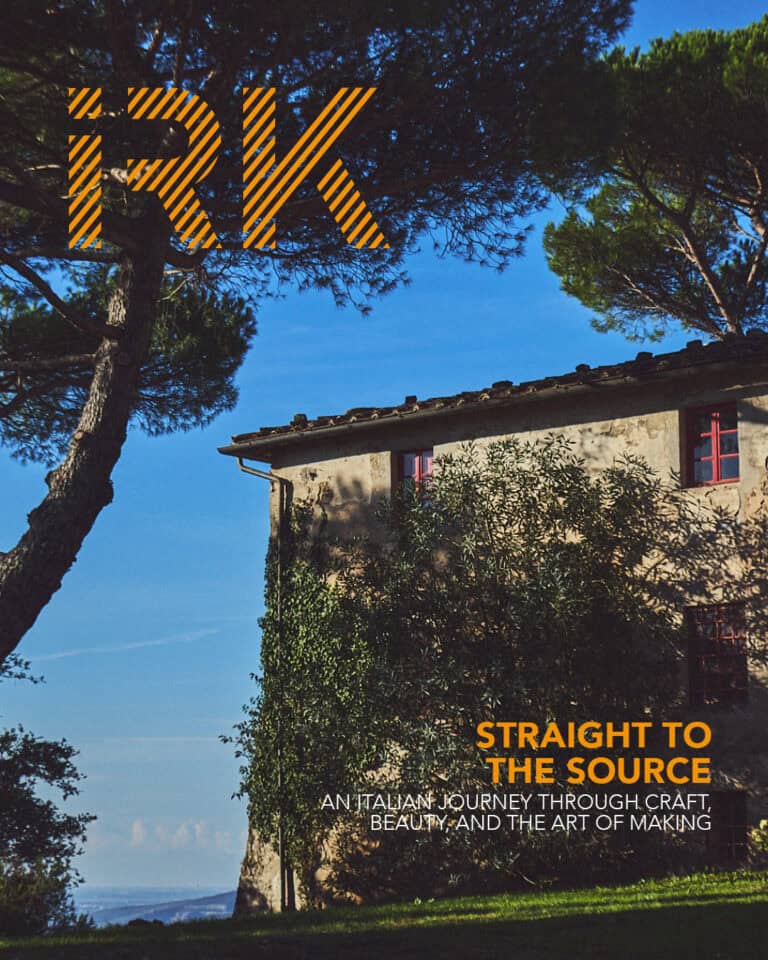
Nadège Mouyssinat
Agnese La Spisa
Sculpting Porcelain With Precision, Curiosity and a Touch of Mischief – Nadège Mouyssinat
In Limoges, where porcelain has been taken seriously for centuries, Nadège Mouyssinat manages to approach it with both deep respect and a twinkle in her eye. She works with a material that cracks when it feels like it, shrinks when it wants to, and basically ignores the rules everyone else tries to impose on it. Instead of letting porcelain intimidate her, she treats it like a slightly mischievous partner. One that keeps her humble, curious, and endlessly inspired.
She learned the craft in legendary ateliers, surrounded by masters who can spot a flaw before it even exists. But instead of staying in the world of decorative tradition, she pushes porcelain into unexpected shapes, scales, and poetic ideas. Her sculptures often seem like they’re breathing, floating, or caught mid-transformation.
She may have a Liliane Bettencourt Prize sitting on her shelf, but she’s not the type to hide behind prestige. She’d much rather invite you in and show you what really matters. Below, Nadège Mouyssinat opens the door to her world.
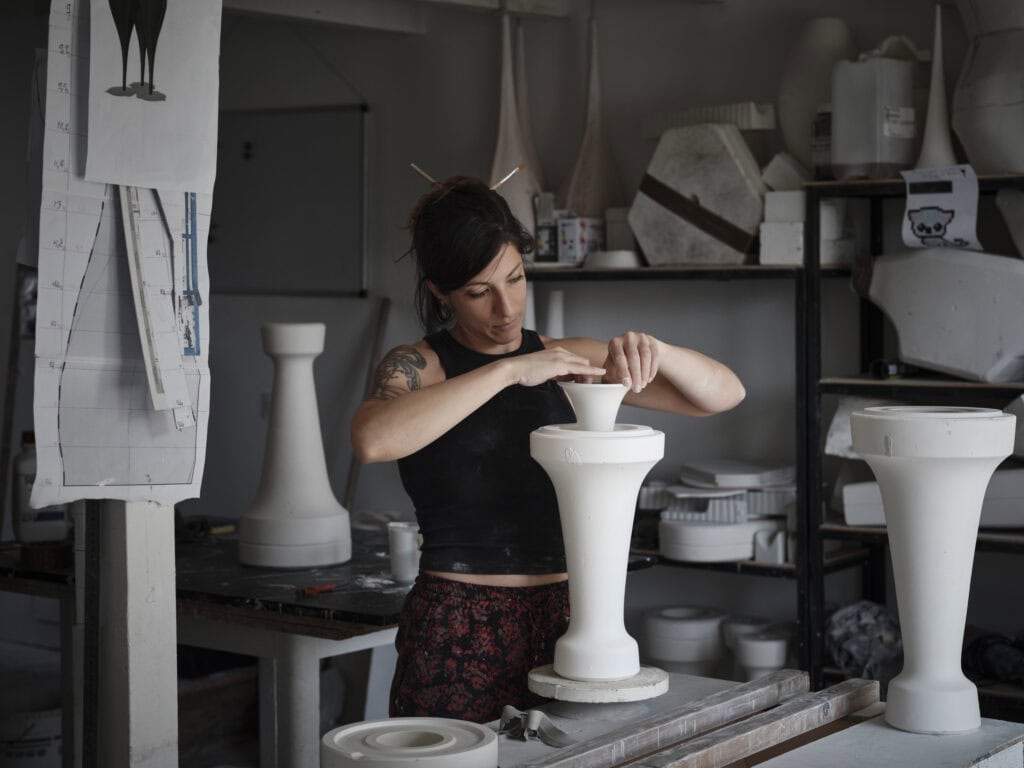
Your work reinterprets centuries old porcelain techniques from Limoges. How do you balance preserving this traditional savoir-faire with pushing the boundaries of contemporary sculpture?
I feel deeply grateful to have learned in such exceptional conditions, in historic places, surrounded by people with forty years of experience. I could never distance myself from what they taught me. It’s far more than a set of techniques; it’s a whole mindset, a constant pursuit of excellence. Once you start letting go of that, even slightly, you lose the savoir-faire, little by little.
What was passed down to us is something we’re meant to protect. We are its guardians. So I must create every piece with that same level of precision and respect.
At the same time, I cannot produce pieces that look old-fashioned; that would make no sense. Technique and craftsmanship are tools, they’re not visible in the form or the style, but they shape everything. It’s a matter of rigor, of method, of discipline. It even extends to how the studio is kept, how clean and organized it is.
This tool, this savoir-faire, opens access to creative playgrounds that would otherwise be unreachable. That’s why I love exploring experimental approaches and working on ever larger scales. I believe it’s the best way to let this heritage shine and evolve.
You describe porcelain as a “living and subtle material.” What does working with such a responsive medium teach you about patience, control, and unpredictability in art?
I would say that this material is stronger than anyone. It constantly brings you back to humility. Failures are countless, misunderstandings too, even for someone as experienced as I am. Many of my older friends, who have spent their entire lives working with porcelain, still fail again and again. If you find that frustrating, you’re in the wrong field.
Personally, I find it thrilling, because it forces me to remain a perpetual learner. I will never have mastered it; I will never “know.” I’ll always have to try again. Knowing that it will never end, but that I can still enrich the savoir-faire through my own contribution, just as others did before me, and others will after, gives a sense of continuity that’s both humbling and beautiful.
It requires constant observation, investigation, questioning, and adaptation. And that goes far beyond the studio. It extends to every part of life. For someone as controlling as I am, it’s a real challenge. But it’s also deeply beneficial, because it reconnects me to the variability of existence and helps me let go of the illusion of control and mastery.
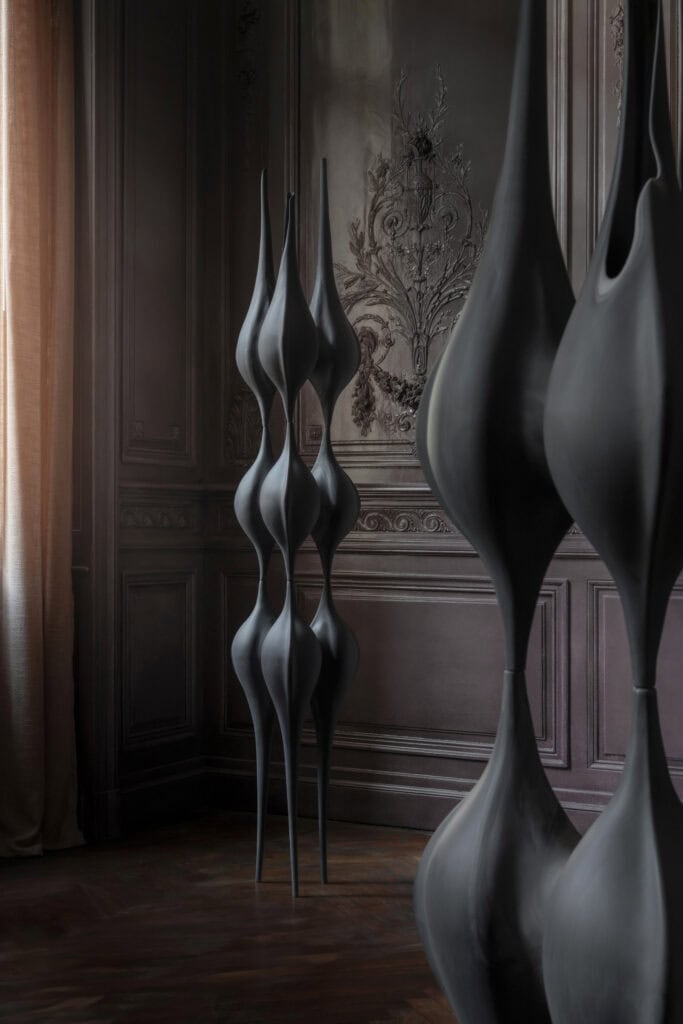
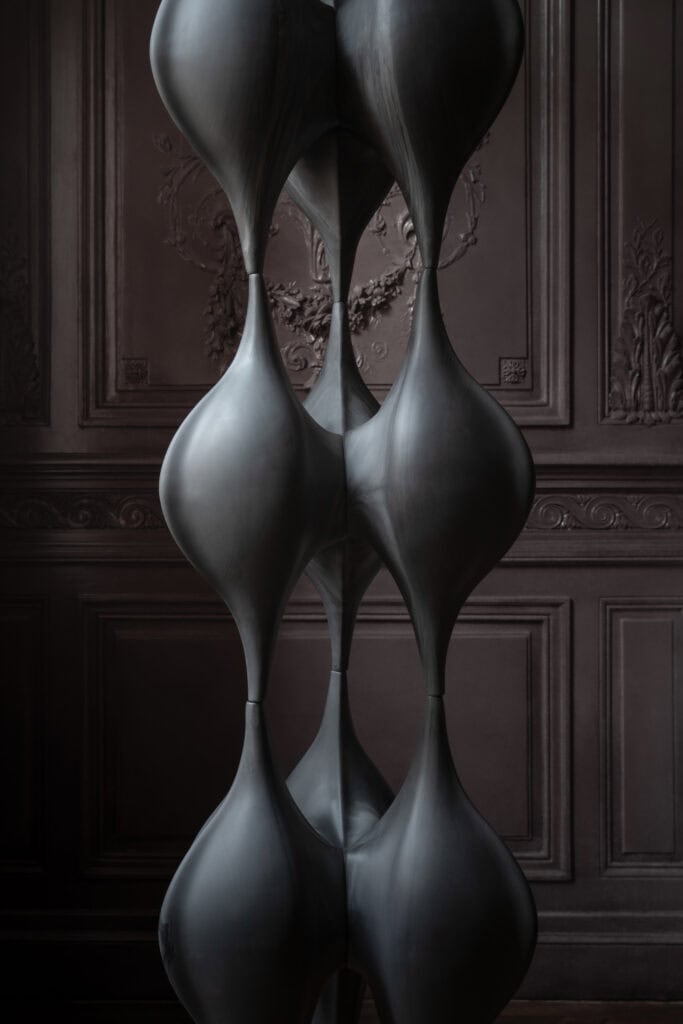
In Habiter les songes, your collaboration with Clémentine Brandibas was rooted in shared inspiration from François Cheng. How did this dialogue between two materials, porcelain and feathers, shape your understanding of “emptiness” and “breath” in creation?
It’s true that Clémentine and I share a deep love for precision and for that almost choreographic dance with a material that constantly questions and intrigues us. We’re both very focused, quite solitary in our artistic practices, and we have immense admiration for each other’s work. This collaboration was a real challenge for both of us, but it made perfect sense.
Emptiness, in our dialogue, was not only formal. It was also intellectual: found in silence, in letting ideas rest, in pauses within our conversations, in moments of reflection. What happens in those silent intervals that we so often dismiss as “nothing”? That’s exactly the power of François Cheng’s writing: sometimes, it’s within the absence of things that things truly exist.
As for “breath,” which to me represents something subtle and fragile, it’s about learning to sense possibilities to remain open, intuitive, and free. That’s particularly difficult within a collaboration: each presence must be justified, balanced, and fluid. Our exchange didn’t rely on long, complex discussions. On the contrary, it unfolded with a kind of quiet clarity through silence and a shared sense of timing.
Many of your works, such as Nùria, evoke both spiritual and organic imagery. How do concepts like femininity, spirituality, and nature intertwine in Nadège Mouyssinat’s sculptures?
I find it difficult to answer this question, because for me it feels completely natural. It’s as if it flows out of me in an uncontrolled stream as though I were merely the executor of some divine or universal order, depending on whether one believes in such things or not. I imagine that what I experience is in fact much more complex, perhaps the result of unconscious neural connections that have been forming for so long in my mind that it feels like an uninterrupted current of inspiration.
It’s all very spontaneous, and when I have to talk about it afterward, I feel more like I’m analyzing what has already happened than explaining a deliberate process. Maybe, deep down, I’m simply trying to reproduce what moves me in art. I deeply admire, for example, the work of Laurent Grasso. When I encounter his pieces, I feel transported into a world that’s at once real, historical, and timeless. It moves me profoundly. His poetry isn’t imposed; it speaks to everyone differently, inviting each person into their own intimate, inner journey.
That’s how I conceive my own pieces, and it’s what I wish to contribute to the creative world, a space where everyone has a role to play. My recurring themes of femininity, spirality, and nature are meant to evoke that sense of emotional openness and inner resonance.
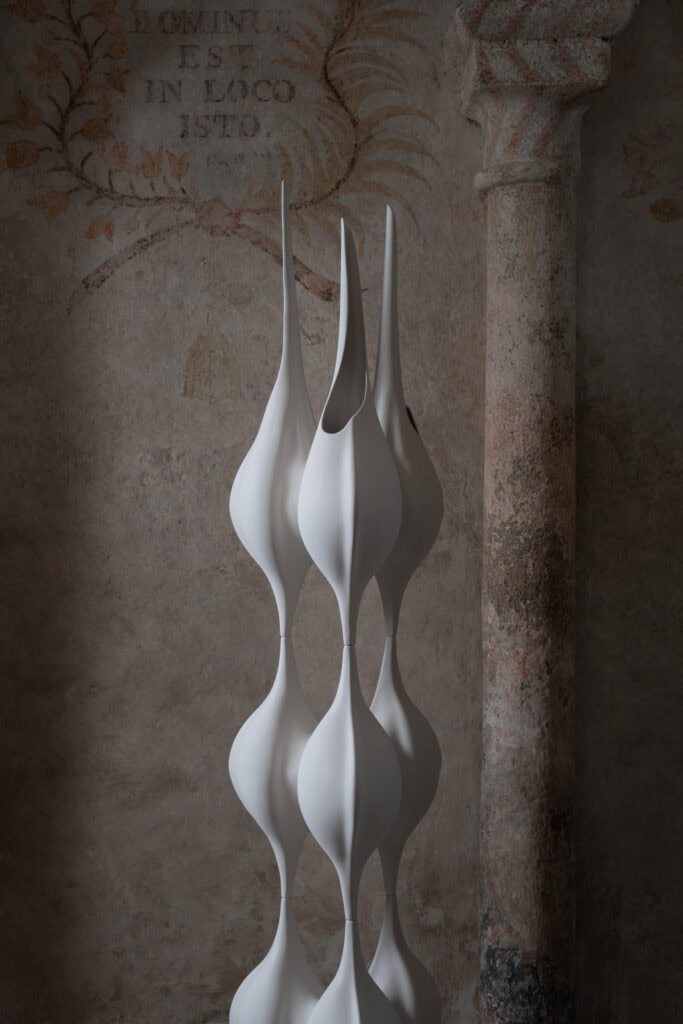

Nadège Mouyssinat you’ve received major honors, including the Liliane Bettencourt Prize for Pseudosphères. How have these acknowledgments influenced your artistic direction or reinforced your independence from trends?
That’s a very interesting question. The first feeling I had when I received that prize was immense joy. The joy of being able to bring more visibility to this material and savoir-faire that I love so deeply, to which I am profoundly attached, and which have been central to both my professional and personal life for so many years.
Then came a deep sense of satisfaction, the feeling that all the work I had done hadn’t been in vain. I spent so many years working quietly, following a path that very few people understood at first. People don’t always believe me today, but in the early years, my work met with no success at all. It was considered too unusual. No one could quite grasp the material, the process, or the forms. Everything seemed to provoke questions. But somehow, I knew I couldn’t do anything else, so I persevered.
Receiving such an award is profoundly rewarding. And to answer your question more precisely, I’d say it strengthened my independence from trends. It encouraged me to trust my own ideas, to believe that even when you feel like you’re creating in a vacuum, driven by conviction you can’t always explain or justify, sooner or later it all makes sense. Hard work always pays off.
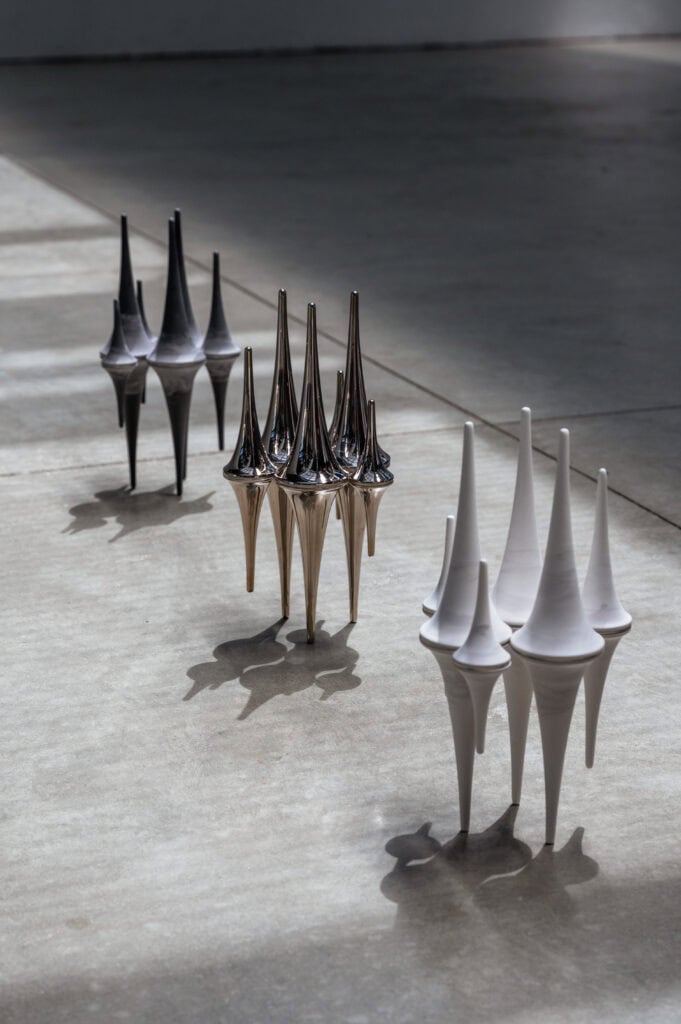

Your sculptures invite quiet reflection, almost as if they were “moments of levitation.” What emotional or sensory experience do you hope viewers take away when they encounter your work in person?
That ties back to what I was describing earlier. Art can serve many purposes: it can be political, protest-driven, entertaining and I value all of those roles. But one of the most profound roles art has played in my own life is that it has always allowed me to find beauty, pleasure, and joy, even in moments of deep sadness or hardship.
Art has always been, for me, a refuge, a way to find beauty and meaning even in the darkest moments. When everything feels heavy or hopeless, a poetic work can still open a window toward emotion and light. That’s the space I try to create through my sculptures: one of suspension, mystery, and quiet wonder.
I want people to feel something before they try to understand it. To be touched in a way that transcends explanation, as if carried for a moment beyond the rational. I love when viewers experience that sense of enchantment, a kind of gentle magic that reconnects them to their own inner world.
A Quiet Spark in the World of Porcelain
Spending time with Nadège Mouyssinat’s work feels a bit like hitting the pause button on reality. Her sculptures don’t shout; they whisper. And in a world that moves incredibly fast, her pieces offer the rare luxury of slowing down, of noticing shape, light, silence, and all the subtle things we usually rush past.
Her devotion to porcelain is serious, but her approach is refreshingly human: patient, curious, open to failure, and always ready to try again. And maybe that’s why her work resonates so deeply.
Share this post
Agnese La Spisa is an Italian creative based in Italy, specializing in publishing and fashion communication. At IRK Magazine, she brings together creativity, research, and design to shape stories with clarity and style. Curious and collaborative, she is driven by a passion for exploring culture, aesthetics, and the narratives that connect people, ideas, and disciplines.
Read Next


